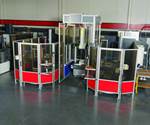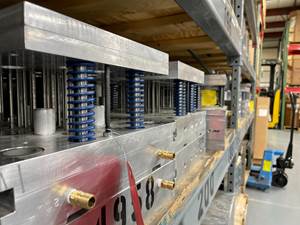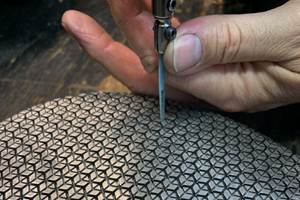Steps for Properly Evaluating a Mold Release Product
Here are some essential steps to follow when selecting the right agent to help eliminate issues that slow down cycle time.
Establishing a baseline for productivity and identifying the number of achievable cycles before mold release reapplication should be done before evaluating any new or alternative release agents. For example, if you are spraying every sixth shot on part X, see if you can do it every seventh or eighth shot. Each additional cycle without spraying can add up to a significant savings.
Here are some essential steps to follow when selecting an agent to eliminate issues that slow down cycle time.
Do the test using your toughest part. If that looks good, try it on other parts that were molded with a variety of resins.
Eliminate debris. Be certain to thoroughly clean the mold and remove all traces of the old mold release. Cleaning the mold before each test helps ensure that your test results are accurate and reflect the performance of that specific release agent.
Be consistent. Be sure that molding conditions do not change during the trial. It is best to set up and make evaluations of all releases during one press operation session, because each operator has a molding style and pattern to his or her work, as does a molding machine and mold. This can impact release agent performance and molding results.
Test to see how many parts can be released with the current mold release and set up. Then clean the mold to ensure a fresh molding environment. Apply the new test mold release based on the directions, and run the mold until parts begin to hang up and you need another coating of the test release. Repeat this process multiple times to ensure that you get a number of test results to compare for consistency. Try to ensure that the only factor being altered is the mold release. Use the same operator, resin, mold temperatures and pressures so these factors do not affect the results.
Use an entire can. After picking the most effective release(s), run the test with one full can and record the number of parts that are molded. Mold release performance can change, both positively and negatively, as more of the release product is used on the mold cavity. Using too much release can lead to buildup on the mold surface and negatively affect part release, and using too little will cause the parts to prematurely stick.
Determine the cost effectiveness of the release. Calculate the cost per part released by dividing the number of parts that Release Product A molds by the cost per can. Then do this calculation with Release Product B. This provides an accurate measurement of the cost per released part for the mold release purchase. Often, a more expensive can of release agent can provide far greater performance in the number of parts released, so much so that the cost per released part can be far lower when using a more expensive yet better-performing release agent.
Select based on productivity. It is important not to make evaluations simply based on the product price. A far more important measure is the number of parts the product can release. The real item of interest is the maximum number of parts that can be molded for the amount of money spent on release. Now that a release evaluation establishes the key facts, you can calculate the most appropriate release for a particular resin and part.
Related Content
Five Benefits of Aluminum Tooling
Aluminum molds are worth a second look as a viable means to swiftly and cost-effectively get products to market.
Read MoreUnderstanding Diamond Compounds
Diamond compounds, with their varied grades, colors and base options, provide a comprehensive solution for mold builders in need of precise and superior polishing across diverse materials and applications.
Read MoreHow to Expand the Use of Aluminum Injection Molds
Six factors to consider to broaden the application of aluminum molds.
Read MoreHow to Polish Ribs for Proper Part Release
Using the right tools and abrasives is essential to polish a mold to the required final finish.
Read MoreRead Next
Using Automated Technology to Fill the Skills Gap
Process automation is one of the fastest-growing strategies for overcoming capacity constraints in a mold shop.
Read MoreYour Guide to Smarter, Faster Mold Design
Dive into expert-curated content delivering proven solutions for mold optimization, manufacturability and precision performance.
Read MoreHow to Use Strategic Planning Tools, Data to Manage the Human Side of Business
Q&A with Marion Wells, MMT EAB member and founder of Human Asset Management.
Read More




















